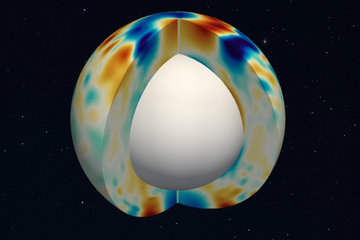All genres
1.
Journal Article
Geographical distribution and interseasonal variability of tropical deep convection: UARS MLS observations and analyses. Journal Geophysical Research 109 (D3), D03111 (2004)
2.
Journal Article
Cross-validation of MIPAS/ENVISAT and GPS-RO/CHAMP temperature profiles. Journal Geophysical Research 109 (D19), D19311 (2004)
3.
Journal Article
Tidal variations in the high-latitude E- and F-region observed by EISCAT. Annales Geophysicae 14 (2), pp. 201 - 210 (1996)
4.
Journal Article
A review of atmospheric gravity waves and travelling ionospheric disturbances: 1982-1995. Annales Geophysicae 14 (9), pp. 917 - 940 (1996)
5.
Journal Article
Phases and amplitudes of TIDs in the high latitude F-region observed by EISCAT. Journal of Atmospheric and Terrestrial Physics 58, pp. 245 - 255 (1996)
6.
Journal Article
The gravity wave-TID relationship: insight via theoretical model-EISCAT data comparison. Journal of Atmospheric and Terrestrial Physics 58, pp. 233 - 243 (1996)
7.
Journal Article
Gravity waves determined by modeling of travelling ionospheric disturbances in incoherent-scatter radar measurements. Radio Science 30, pp. 1551 - 1567 (1995)
8.
Journal Article
Modellsimulationen zur Interpretation von TIDs in hohen Breiten. Kleinheubacher Berichte 36, pp. 399 - 408 (1993)
9.
Conference Paper
Der Schwerewellen-TID Zusammenhang - Ein ``Lehrstück'' der Natur zur Physik der Thermosphären-Ionosphären Wechselwirkung. In: Kleinheubacher Berichte, pp. 429 - 438. (1994)
10.
Thesis - PhD
Untersuchung des Phasen- und Amplitudenverhaltens von Travelling Ionospheric Disturbances mit Hilfe von EISCAT-Daten. Dissertation, Georg-August-Universität Göttingen (1994)











